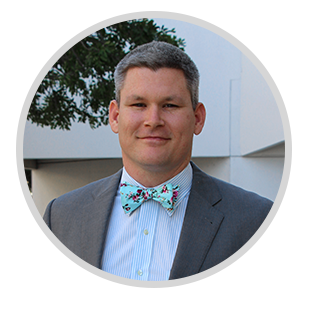Why UM Coverage in Florida Could Save You Thousands of Dollars
October 23, 2019
On average, you can expect to be involved in three to four car accidents over the course of your lifetime. That national average is likely much higher in Florida, which ranks as the second-worst state for distracted driving. So, how does this relate to UM Coverage in Florida?
If you have been injured in a car crash, then you are likely aware of the expensive nature of the required medical treatment, the difficulty in working with injuries, and the pain and suffering associated with living with crash-related injuries.
This article gives a brief overview of the importance of Uninsured/Underinsured Motorist coverage (UM Coverage), which is the best way to protect you and your family from negligent drivers. Before diving into UM Coverage, I want you to understand the different types of insurance coverage, including bodily injury coverage, and what they do to protect you.

Bodily Injury Coverage
You may assume that if you are injured in a car crash, the at-fault driver will be responsible to pay for your damages. However, at-fault drivers are frequently not identified. Hit-and-run crashes occur at an alarming rate, with one occurring somewhere in the U.S. approximately every 43 seconds.
Even where the at-fault drivers are identified, recovering money from them is only a practical option if they had Bodily Injury (“BI”) insurance coverage. BI coverage compensates other people for damages caused by the at-fault party’s negligence.
Unfortunately, many at-fault drivers do not have BI coverage. Florida law does not require it, and the most dangerous drivers often find BI coverage to be too expensive. Furthermore, 26.7% of Florida drivers, the highest rate in the nation at over double the national average, have no insurance at all.
Uninsured/Underinsured Motorist Coverage
If the at-fault driver does not have BI coverage, the only practical option is to pursue your own insurance company IF you have the right kind of coverage: Uninsured/Underinsured Motorist (“UM coverage”).
UM coverage compensates you, your family, and the occupants of your vehicle, for damages caused by the negligence of others if the at-fault driver(s) cannot be found, do not have any insurance, or do not carry enough insurance.
UM coverage extends to two groups. The first, often referred to as “Class I” insureds, includes: the named insured, their spouse, and the relatives of either who reside in the same household. Mullis v. State Farm, 252 So. 2d 229 (1971). The second group, “Class II” insureds, includes: permissive operators and passengers of the insured vehicle. Sommerville v. Allstate, 65 So. 3d 558 (Fla. 2d DCA 2011). Unlike Class II insureds, Class I insureds, are generally entitled to UM coverage any time they are injured by an uninsured or underinsured motorist. That is, Class I insureds have UM coverage even if they are injured as pedestrians, while riding a public bus, or while operating a vehicle owned by them that was uninsured, even a motorcycle. As such, UM coverage is incredibly important as it extends to a wide variety of situations to protect you and your family.
UM insurance can be used to pay for: past and future medical expenses; past and future lost wages; and past and future pain and suffering. Given the likelihood of being in car crashes, the fragile nature of our bodies, and the frequency of uninsured drivers, it is imperative that you purchase UM coverage to protect you and your family. You cannot control bad drivers, but you can prepare for them by purchasing adequate coverage to protect your loved ones.
Easily the worst part about being a personal injury attorney is having to inform deserving clients with severe injuries that there is nothing I can do to help them because there is no insurance coverage for us to pursue on their behalf.
The good news is that this all-too-common scenario is entirely preventable. Do not wait.
Protect your family and yourself by calling your insurance company TODAY and adding as much UM coverage as you can afford. For your convenience, here is a list of helpful numbers:
- AAA: (866) 514-8261
- Allstate: (877) 810-2920
- Assurance America: (800) 450-7857
- Auto-Owners: (517) 323-1200
- Esurance: (800) 378-7262
- Farmers: (888) 327-6335
- Geico: (800) 207-7847
- Liberty Mutual: (866) 681-9325
- Nationwide: (877) 669-6877
- Progressive: (800) 776-4737
- Safeco Insurance: (877) 744-1148
- State Farm: (800) 782-8332
- Travelers: (866) 522-1338
- USAA: (800) 292-8045
If you don’t have insurance now or are looking for more competitive rates, you can check out a local Tampa Bay insurance agent that will find you the most competitive rates for the coverage you are looking for.
Stacked vs. Unstacked UM Coverage
As noted in one recent court opinion, “[t]o the average insurance consumer, thinking about UM stacking is as enjoyable as a dramatic reading from the Internal Revenue Code.” But while bland, stacking UM coverage is an important issue on which all Floridians should be informed. There are two types of UM coverage: stacked, and non-stacked.
Stacked UM allows you to multiply the amount of coverage by the number of vehicles on the policy. For example, if your policy provides $100,000 per person in UM coverage, and covers four vehicles, the stacking variety would provide you with $400,000 per person in coverage, while non-stacked would only afford you with $100,000 per person.
If you have two or more insurance policies, you can combine your UM coverage from each of the policies. Though this is often called “stacking,” it is not technically stacking at all, but just using coverage available under more than one policy.
If you or a loved one has been injured in a car crash, call me, Attorney John McKnight, with Pipas Law today at (727) 888-3925 for a free, confidential consultation.

SITE CREDIT
PRIVACY POLICY
© COPYRIGHT 2017-2024 PIPAS LAW GROUP | ALL RIGHTS RESERVED
What is the typical timeline of a personal injury case?
Who Pays For Car Repairs After An Accident In Florida?
Why Tampa Car Accident Cases Rarely Go To Trial
popular BLOGS
360 Central Avenue Suite 1570 St. Petersburg, Florida, 33701
Ph: 727-888-3925
Fax : 727-258-0082
MAIN OFFICE
Dade City | Zephyrhills | Port Richey | Trinity | Riverview | Tampa | Lakeland Bradenton | Sarasota | Orlando | Lutz Clearwater | Brandon | Saint Petersburg| Wesley Chapel | Apollo Beach | Largo | Brooksville | Spring Hill | Palm Harbor | Gainesville | Ocala
AREAS SERVED
PIPAS LAW GROUP
SCHEDULE A FREE CONSULTATION
Gainesville office